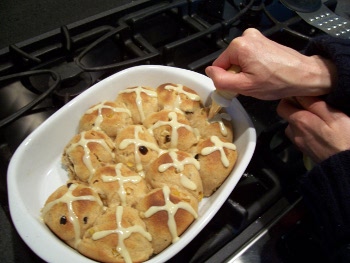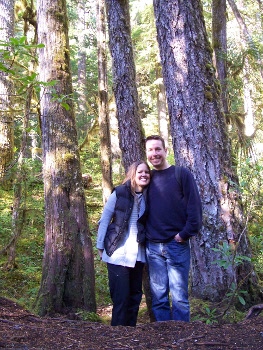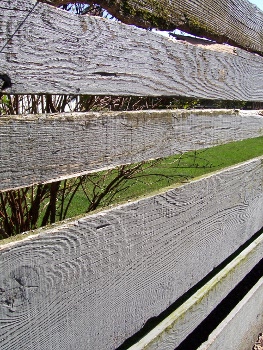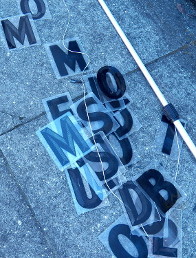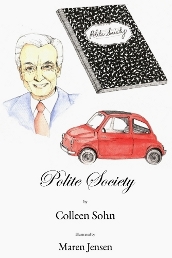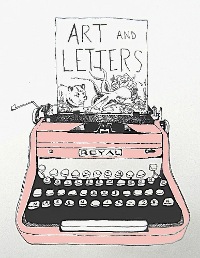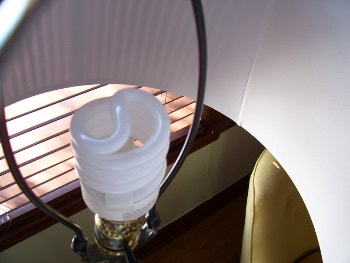
Happy Earth Day, everyone! As I am a pretty big fan of our blue planet, I do my best to be a good steward, often to the consternation and amusement of my friends and family. I’m no Ed Begley, Jr., but I’m certainly trying! Here’s a long one (maybe a cup of tea is on order? a snack?) about what happens Under a Red Roof, starting with the oft repeated Reduce-Reuse-Recycle.
Reduce – Do we really need it? Is it excessively packaged? Did it travel a long distance? Is it made to last? No plastic bags for produce, groceries, or to line garbage cans.
Reuse – Can I use it again and again and again? Take reusable bags everywhere, not just the supermarket. They’re in the car, in my purse, by the door. No paper napkins or paper towels (save for picking up cat vomit) for us, only cloth; they’re soft, easy to clean and last forever.
Recycle – cans, paper, plastic, glass, cardboard.
All Around the House:
First and easiest, well mostly, we turn off the lights when leaving a room and use fluorescent bulbs everywhere we can, but not everywhere. I have yet to find a nice bulb for the bathroom or a dimmable bulb that actually works in the kitchen (the one I tried flashed like an emergency signal – no thanks). Here’s hoping the technology develops soon and that the disposal of these bulbs gets easier. Laden with mercury, they can NEVER go into the garbage.
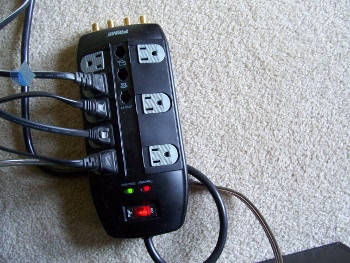
Even though we buy 100% renewable electricity for our house (for $5 or less per month added to our bill), we’re still pretty vigilant about not wasting it. Our average daily kilowatt hour usage is 10, which isn’t bad, but certainly could be better. I’ve read about households using less than 3.0! In hopes of getting us there, we recently started using power strips like this to turn off our two televisions and our electronics, not only for surge protection, but to keep the phantom load (energy used when the TV, for instance, is not turned on) from devouring energy. Much to my frustration, the hubster scoffed at the concept of the phantom load, but then we bought a Kill-A-Watt to measure individual device usage. He literally hollered out an expletive when he saw how much energy our rarely used workout room TV was gobbling up. A convert! Everything else, like the coffee grinder, toaster oven (we don’t have a microwave or coffee pot), and electric kettle get unplugged after each use.
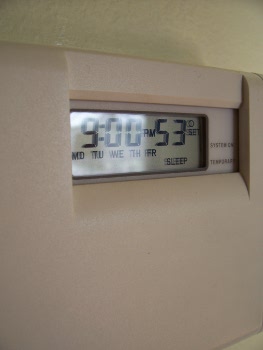
During the cold months, we heat our house to 68 degrees from 5:00 p.m. to 9:00 p.m. weekdays, and 9:00 a.m. to 9:30 p.m. weekends. At all other hours and any time we leave the house, the thermostat is set at 53 degrees, which, I probably don’t need to tell you, is cold. The hubster and I call it the physical challenge (though I do allow myself use of the space heater to practice yoga). I wear a lot of layers, so does our bed. If it’s really cold, I wear a down vest and a woolen hat much of the day, keeping the hat on when I sleep, too. I also like to have a cat on my lap and cuddle with the hubster. There are worse things in the world than cuddling, and a few perks, too. First, our gas bill is pretty low (our very highest being $90). Second, we sleep better both from the quiet of not having the heat running and the cool of the room. Third, unlike when we sleep in a heated room, we aren’t congested in the morning. I wish I knew the science behind that last bit.
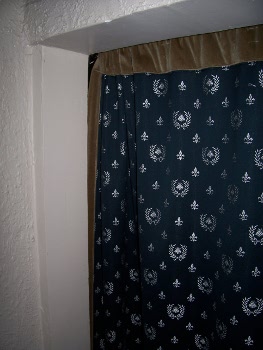
This curtain helps keep the cold air from the unheated hallway upstairs from blasting us on the main floor of the house, keeping the living room much more comfortable. It looks kind of neat, too. Those are bees and fleur de lis if you can’t make them out.
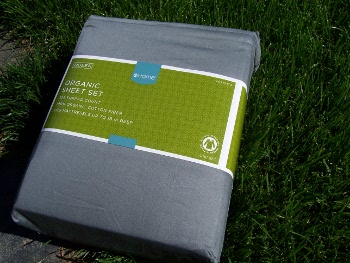
In the Bedroom:
Did you know that the fabric of our lives is considered the dirtiest crop on earth? To make a small and affordable step in the right direction (buying from Target and Land’s End), most of our towels, all of our sheets, and the mattress we sleep on are made from organic cotton. I’ve also found Anvil organic cotton t-shirts for the hubster and am on the hunt for organic clothing that suits my J. Crew style. I think my next pair of jeans will come from Good Society, despite my super-thrifty gene hyperventilating at the price tag. In the mean time, I take good care of my clothes, so they last a long time.
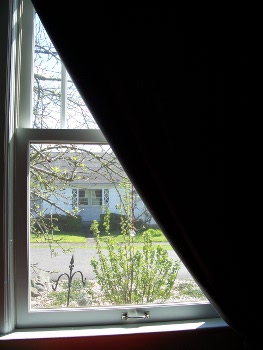
The dark curtain helps keep the light of the city and sometimes the light of the moon from keeping us awake at night (our sleep gets better and better). It also keeps heat in in the winter and out on the hottest summer days, as there’s no A/C in the Cooper-Sohn household. You’ll also notice a bit of greenery. We have lots of deciduous plants and trees on the south side to shade and cool our property from the harsh summer sun. It works pretty well, and will only get better as everything matures.
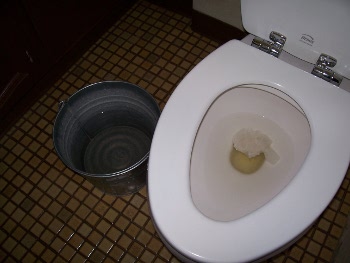
In the Bathroom:
The old saying goes, “If it’s yellow, let it mellow. If it’s brown, flush it down.” I would like to add – after mellowing, bucket flush with grey water. The hubster and I collect water, either from the first bit of cold that comes out of the tap in anticipation of a hot shower, from the tub after finishing a bath, or the “waste” created by our furnace. In any case, in combination with the mellowing, we tend to only use a conventional flush for number two (the bucket flush leaves a lot to be desired in this department), helping to reduce our water use by at least 1000 gallons a year.
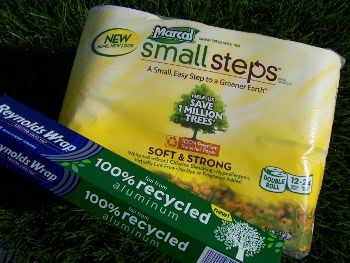
We don’t actually use foil in the bathroom, but it is nice that it’s 100% recycled and the quality is exactly the same as the non-recycled variety while using 92% less energy in the process of making it. That’s a lot! I’d be lying if I said the 100% recycled toilet paper is of the exact same quality, but only if I’ve recently been somewhere posh, otherwise I can’t tell at all. If it came wrapped in paper instead of non-renewable plastic, I’d be even happier about it.
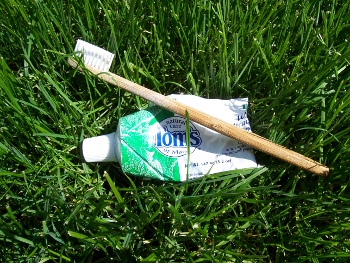
Plastics floating in the ocean are the cause of nearly a million sea bird and 100,000 marine mammal deaths each year, with toothbrushes at the top of the list. Animals eat it, thinking it’s a tasty treat, and never digest it. We started using the Environmental Toothbrush, made from compostable bamboo to help do our part in this department, with no difference in the quality of the brush. I think it looks pretty cool, too. We also buy Tom’s of Maine toothpaste because it’s not laden with wacky and harmful ingredients, and we can recycle the tubes. I do, however, admit to buying whitening varieties in plastic once or twice a year. Blame that on vanity!
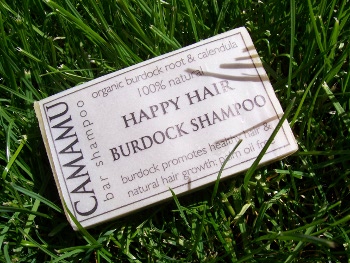
We use bar shampoo as another means to keep our plastics consumption down (great for travel, too). Even better, Camamu is made by two lovely ladies at a local shop steps away from my favorite grocery store. Conditioner is another issue, but I am working to find the right combination of coconut and essential oils to eliminate my need for it altogether (they still come in plastic, just less of it). It’s a trickier business than I would have imagined. I’ve also tried using baking soda exclusively for washing and conditioning, but as my hair got longer, it was less effective, hard to keep from being a might oily and smelly. My sweaty head, just like my shit, stinks.
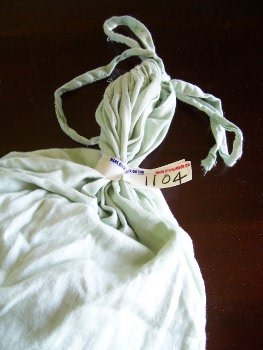
In the Kitchen:
I buy in bulk, bringing my own containers, like this cotton drawstring bag (it came with a set of organic cotton sheets!). I fill these with oats, flour, and sugar. I am also not afraid to bring my own glass containers, weigh them (so I don’t have to pay for their weight in addition to whatever I’m buying), and fill with beans, popcorn, rice, nuts, and the like. This saves a lot of money and one time use packaging that often can’t be recycled. In the case of the beans, it also prevents me from consuming the toxic BPA that lines the cans. We’ve also seriously reduced our consumption of products that come in plastics to treats a couple of times a year (like yogurt and cottage cheese). Even though the container can be “recycled” (it’s actually down-cycling because plastic doesn’t maintain the same quality) the plastic will be around for at least 500 years.
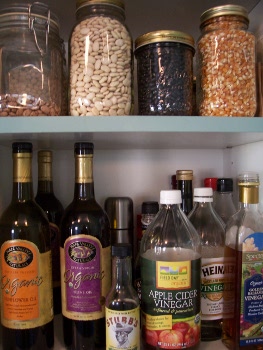
Almost every food item I buy is organic, meat to produce to grains, including most of the oils and vinegars pictured here. Organics are safer for human consumption, especially in the case of the “dirty dozen,” safer for farmers and their families, safer for our ever imperiled water supply, safer for the birds, bees, flowers, and trees. It does cost more but is worth it. Add seasonal, sustainable, and mostly local to that – we stick to the Pacific Northwest and California for most products, except sugar (Florida) and grapefruit (gotta have my Rio Star) – no bananas or French wine. If we don’t know where the meat, poultry, or fish comes from, we’re not eating it (though we still eat too many animals – baby steps).
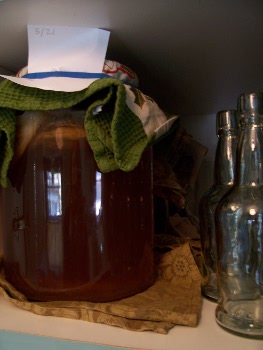
We make our own kombucha (going on five years), granola, as well as canned fruit, tomatoes, jams, chutneys, and pickles. The benefits are four fold: homemade tastes best, we control what goes in (all organic), the price is considerably less (like $.50 a bottle for kombucha compared to $2.99), and we put the final product in glass containers (no BPA!) that we use over and over again.
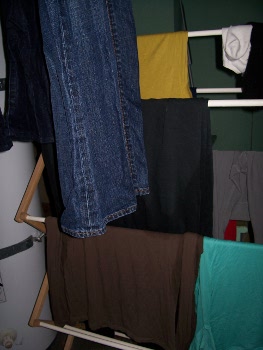
In the Laundry Room:
We use a front loading washer (they use about 40% less water than top loaders), wash everything but towels in cold water (less energy), and air dry nearly all of our laundry, either on these lovely racks (ha!) in the basement or on our line outside. Our towels go in the dryer all year (I have yet to get over that board stiff quality of air drying) and sheets when it is wet out. We only use environmentally friendly biokleen laundry soap and never use bleach (very toxic) or dryer sheets.
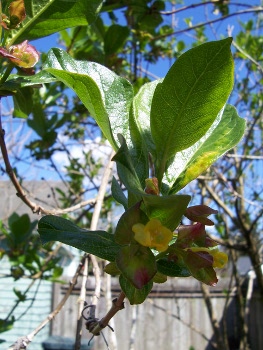
In the Yard:
Though I have a bit of a peony and lavender obsession, the majority of what we plant these days is native to the Pacific Northwest, like the Twinberry above. It might not be the prettiest, but the birds and bees can’t seem to get enough of it! In flower, it attracts hummingbirds, chickadees, and bushtits. The ripe berries bring a whole host of others. We’ve also planted native kinnickinnic, strawberry, two ferns (some are actually volunteers that we’ve transplanted), mock orange, myrtle, two currants, huckleberry, and Oregon Grape. These are also easier to grow, tend to be more drought tolerant, and suffer from fewer diseases and marauding insects (they’ve evolved together) than non-native plants. Besides, they’re like “home” to the native birds and bees, like grits and collards to a southern girl.
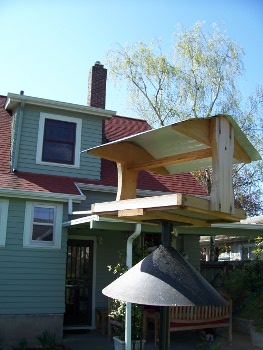
Planting natives, feeding the birds, and providing a consistent source of clean water (a bird bath) is also part of our grand scheme to create a more natural habitat for our bird and insect friends, like what used to be here before us. Humans have taken enormous swaths of land and created near literal deserts for wildlife by depriving them of the food and shelter necessary to survive (short mowed grass does not a habitat make). Even if you don’t want to feed the birds, we can all do our part by having flowers most of the year (even if they’re not natives and are in pots) to keep bees and other pollinators fed (no bees, no food), and shelter for birds via trees and shrubs.
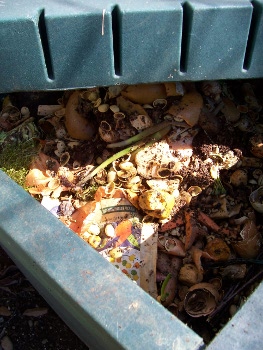
We compost, collecting all of our kitchen scraps (except animal protein) and biodegradable packaging in a bucket under the sink, adding our grass clippings, leaves, and garden waste to the outdoor bin as well. Then, usually in spring, we marvel at the fine, sweet smelling compost spread over the yard, improving our soil and reducing our need for water and fertilizer. Just in case you might think it’s smells awful, it doesn’t; or that it’s hard, it isn’t. We don’t do anything with ours, no stirring or shoveling, no adding of anything fancy. We just pile it on, letting the bugs and worms have their way. Not only is it great for the yard, it keeps us from using valuable space in landfills with something completely recyclable.
The Car:
We’re finally at the end, though there’s no photo. I used to drive more, but the BP spill kind of freaked me out. I saw the oil rushing out, day after day, birds and fish covered in black glop, fishermen and businesses of all stripes losing their livelihoods, and thought, “I am part of this.” My heart ached, but it didn’t break. I stopped going to my favorite Nia class two days a week and to work out on Friday mornings and started spending more time on the mat here with Shiva Rea (so glad for that). Then the Subaru got stolen, and we realized we could make it with one car, our Mini Cooper. It gets 26-28 mpg in the city, and 42 mpg on the highway, though, on my way home from Bellingham it got 47 mpg! I guess the the jet stream was with me that afternoon. Even with the one car, we don’t drive much, with the hubster on his bicycle three days a week, and me consolidating most car trips to a grand loop one day a week. In fair weather (I am a wuss), we walk or bike to local restaurants, the library and supermarket, to visit friends, or catch a movie.
We’re doing the best that we can. I hope you are, too!


